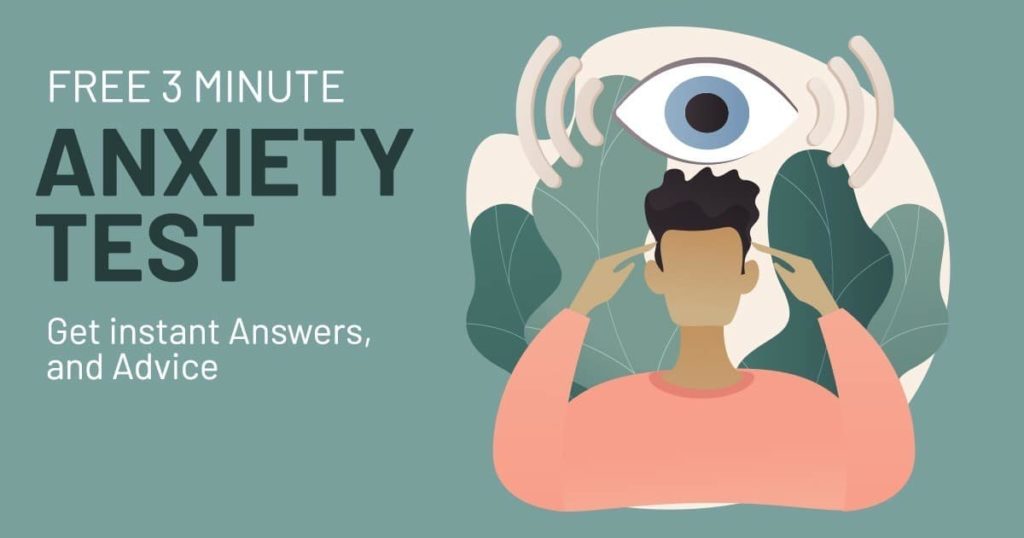Experiencing anxiety is normal for all people at some point in their lives, but if you are experiencing symptoms interfering with your daily life, you could have a disorder. Have you ever considered taking an anxiety test? Maybe you’re interested in learning more about a specific type of anxiety, like a social anxiety test for teens.
We put together a quick quiz that can help you learn more about your symptoms and if you should talk to a professional.
When you face a stressful or frightening situation, you may have symptoms like nervousness or worry. Then, once the crisis ends, you should return to feeling normal. If these feelings are persistent even when there’s no stress, it could be a disorder.
Different types of anxiety & depression are the most commonly occurring mental conditions in the United States. According to the Social Anxiety Institute, more than 31% of Americans will experience physical symptoms of an anxiety disorder during their life.
- Excessive worry or fear
- Agitation
- Restlessness
- Panic
- Irrational sense of danger
- Racing thoughts
- Rapid breathing
- Headache
- Stomachache
- Pounding heart
- Trembling
- Insomnia
- Muscle tension
The Anxiety Test
Our assessment asks you a few basic questions about what you experience and how often you have those symptoms.
You might find that based on your answers, you have a reasonable anxiety response. Someone with a moderate anxiety response can have a disorder and experience symptoms beyond what is considered normal.
No matter what your results tell you, anxiety is highly treatable when you work with professionals.
The Different Types of Anxiety
Some of the most common types of anxiety include:
Generalized Anxiety Disorder (GAD)
Our assessment can be a good option for you to use as an initial diagnostic tool for GAD. GAD includes broad, excessive worry that you can’t control. For a GAD diagnosis, you need to have symptoms that occur most days for the past six months.
Social Anxiety Disorder
We mentioned above a social anxiety test for teens because it’s also a prevalent type of disorder.
Symptoms of social anxiety might stem from intense fear, embarrassment, or humiliation in a public setting or social interactions. These social situations can include work, school, large groups, and even situations involving a few people.
Panic Disorder
Panic attacks can lead to common symptoms, including shortness of breath, dizziness, shaking, sweating, and chest pain. You may have a feeling of doom, or you could lose your attachment to reality when you’re experiencing a panic attack. Attacks usually last less than 20 minutes.
Panic disorder means you have recurring panic attacks.
Diagnosing Anxiety
Diagnosing anxiety requires a professional who can compare your symptoms to the criteria that are part of the DSM-5. The DSM-5 is a guide to psychiatric disorders. Then your provider can create a treatment plan, as is the case with any health condition.
Your doctor could potentially use a variety of diagnostic tests for anxiety symptoms, as well such as:
- The Social Phobia Inventory
- Generalized Anxiety Disorder Scale
- Hamilton Anxiety Scale
- Zung Self-Rating Anxiety Scale
- Beck Anxiety Inventory
- Yale-Brown Obsessive Compulsive Scale
- Penn State Worry Questionnaire
What Are the Treatment Options?
If you speak to a health care professional and receive a diagnosis, many excellent treatment options are available. We want to encourage you to get treatment because the available options do tend to work so well.
Psychotherapy
Also known as talk therapy, psychotherapy yields excellent results for many people with GAD or social phobia. Talk therapy is also helpful for other mental health conditions, including depression.
When you participate in psychotherapy, you work with a counselor, therapist, psychiatrist, psychologist, or social worker. Your goals are to reduce the symptoms that interfere with your functionality in daily life and your quality of life. There are many types of options, including cognitive-behavioral therapy, which is the most popular type of therapy.
Medication
Medications can improve your quality of life and reduce your symptoms. Some antidepressants may help symptoms as well, and specific anti-anxiety medicines. A selective serotonin reuptake inhibitor or SSRI tends to be a first-line medication option. These medications include Lexapro and Prozac.
Tricyclic antidepressants like Anafranil and Tofranil are options for treatment, as are benzodiazepines like Valium and Xanax. Benzodiazepines tend to be short-term medications because they have substance abuse potential. Beta-blockers like propranolol could be something your treatment provider recommends too.
Alternative Treatments and Lifestyle Changes
Making lifestyle changes for people with mental disorders can be extremely helpful, especially when paired with therapy and medication.
Your treatment plan might include exercise, deep breathing, relaxation exercises, and reducing your use of alcohol or caffeine.
Acupuncture, yoga, and changes in nutrition can also help. A healthy diet rich in fish, lean meat, nuts, and whole grains can help reduce your symptoms. Taking probiotics or consuming fermented foods has been shown to have positive effects on mental health.
Getting Help
When you struggle with any mental health disorder symptoms, getting an accurate diagnosis and then getting help is intimidating. You may have also dealt with symptoms for so long that you don’t even realize it’s a problem. Having the symptoms can just be like a way of life for you, but that doesn’t have to be the case.
No matter how long you’ve had these symptoms, if there’s any impact on your life it’s a good idea to get talk to a mental health professional at The Mental Health Center of San Diego. Our anxiety test is an excellent first step, and we encourage you to give it a try and then contact us at (858) 258-9883 to learn more about available treatment options.









